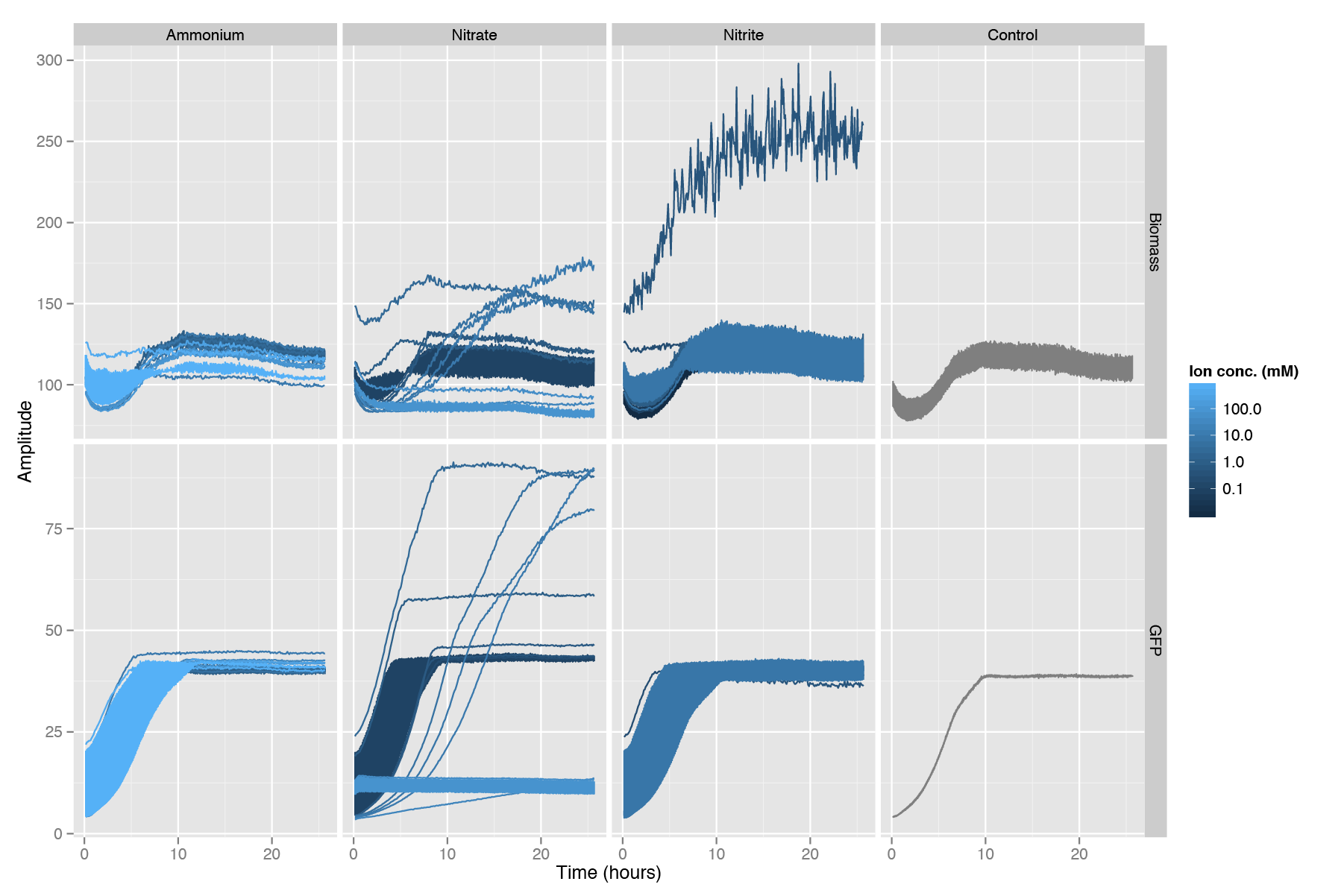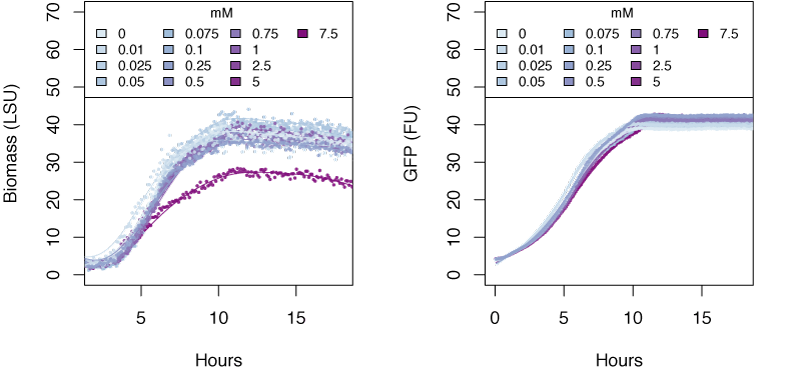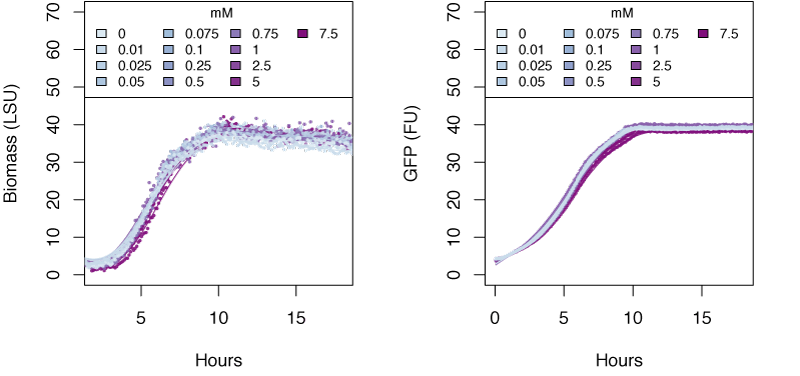Team:DTU-Denmark/ToxicityExperiment
From 2013.igem.org
(→Description) |
|||
| Line 2: | Line 2: | ||
== Description == | == Description == | ||
| - | + | ||
| + | Determine whether the ions nitrite, nitrate and ammonium are toxic to E. coli, and at what concentration. This experiment will use the Biolector to grow an E. coli strain that constitutively expresses RFP in the presence of these ions (at a range of concentrations) to determine the OD and fluorescence of the cells as a proxy for growth. | ||
== Results == | == Results == | ||
Revision as of 15:36, 28 September 2013
Toxicity Experiment
Contents |
Description
Determine whether the ions nitrite, nitrate and ammonium are toxic to E. coli, and at what concentration. This experiment will use the Biolector to grow an E. coli strain that constitutively expresses RFP in the presence of these ions (at a range of concentrations) to determine the OD and fluorescence of the cells as a proxy for growth.
Results
All Results
These panels show the response in biomass and fluorescence of GFP over time for varying concentrations of ions. The data has been baseline adjusted, etc[get details], by Chris' scripts [get name].
Ammonium
The horizontal facet shows concentrations in mM.
Nitrate
Nitrite
Conclusions
Concentrations of ammonium and nitrite were not sufficient to inhibit growth. Nitrate at concentrations of 25mM and greater inhibits both biomass and expression of GFP. Concentrations of nitrate at 5mM and greater show delayed expression of GFP and slower growth.
 "
"








